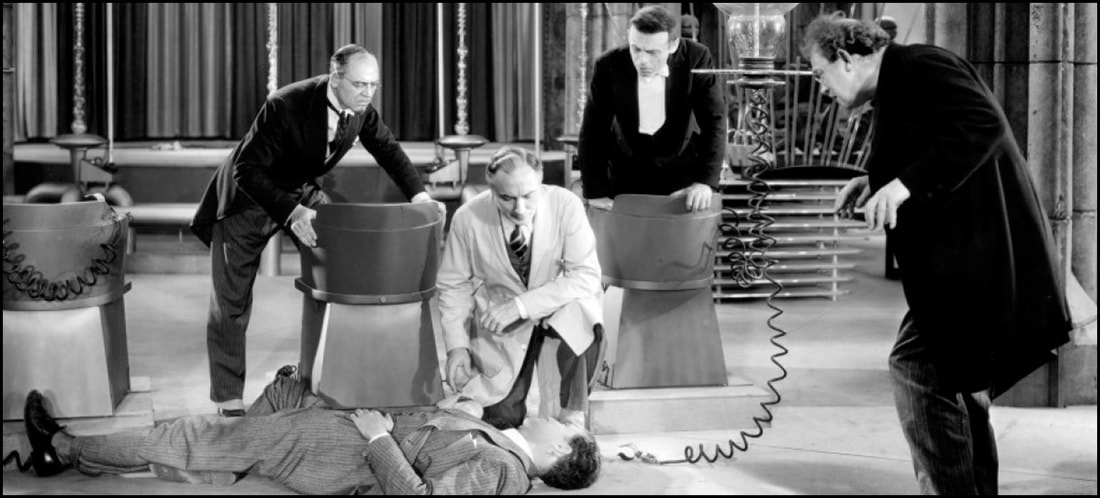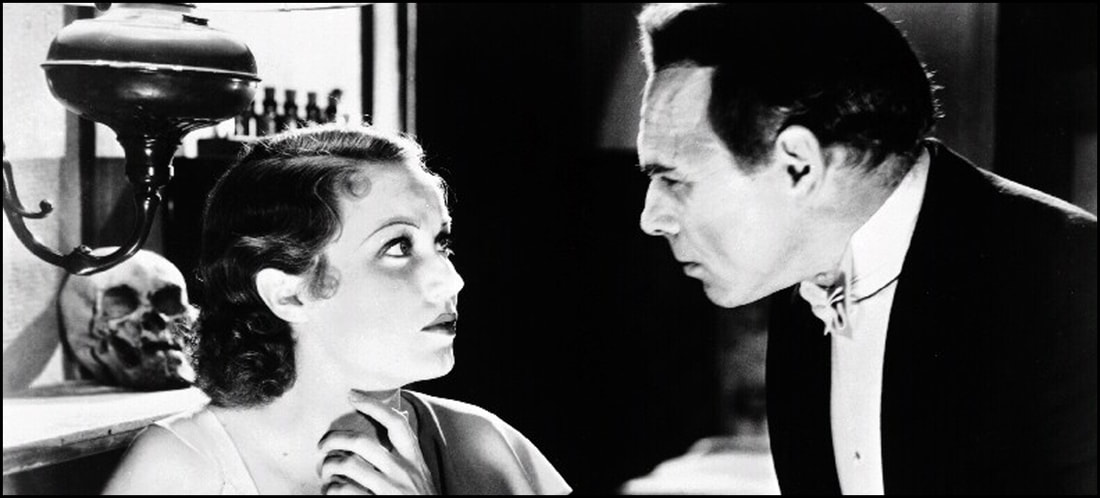"Doctor X" Cures What Ails You With Death!
Well, that would be when it combines elements beyond the traditional Victorian-style thriller as is the welcome case with 1932’s occasionally impressive Doctor X. Directed by Michael Curtiz (the same who would go on to helm 1942’s Casablanca) and adapted for the silver screen from a play by Howard Warren Comstock and Allen C. Miller, the SciFi-lite feature takes a stab in the dark at crafting a pleasant enough whodunit by way of introducing the concept of ‘synthetic flesh.’
Intrigued? Perhaps you should be …
[Note: The following review will contain minor spoilers necessary solely for the discussion of plot and/or characters. If you’re the type of reader who prefers a review entirely spoiler-free, then I’d encourage you to skip down to the last few paragraphs for my final assessment. If, however, you’re accepting of a few modest hints at ‘things to come,’ then read on …]
From the film’s IMDB.com citation:
“A wisecracking New York reporter intrudes on a research scientist's quest to unmask The Moon Killer.”
Yes, I suppose it’s fair to label Doctor X essentially as a murder mystery, but I suspect audiences showing up to the motion picture when it was originally screened were more interested in the film’s Technicolor potential (I’ve read that the film was shot in a two-color format which sounds a bit more experimental for its time than anything else, though I’m no film historian) as well as the director’s promise to curl the audiences blood … with horror! (Let it be known that your grandfather and great-grandfather likely appreciated movie scares as much as you do.) Much of X’s second half takes place in a vast, palatial estate wherein the good doctor himself – Dr. Jerry Xavier (played by Lionel Atwill) – attempts to solve a baffling murder with the use of science. The genius has fashioned together what might be considered an early yet crude attempt of a lie detection – albeit one with the kind of bells and whistles found in Baron Von Frankenstein’s castle – and it requires the dramatic re-enactment of the killing itself to get the ball rolling.
But what I found most impressive about X was that fated second half, one that gives way to what’s an obviously contrived love story (a legitimate criticism of so many features from this era) and the use of science by both good and evil forces. It would seem that the pursuit of knowledge is no longer the province of the those seeking justice alone, and this idea truly gives the film its foundation. That and some impressive production detail lift this one a cut above other forgettable fare, making it definitely worth a single viewing.
Fay Wray – who one year later would become a household name with her work aboard King Kong (1933) – stars as Joanne Xavier, the doctor’s daughter, and she stumbles across the nosey reporter trying to gain access to her father’s private estate. The typical 30’s era wordplay ensues, and a budding (yet only possible in the movies) romance is born. Can these two witty young adults put their heads together quick enough to uncover just who the Moon Killer is and what his connection is to her father? Naturally, you’ll have to tune in to find out, but let’s just say this one doesn’t come up short with the promise of a happy ending.
When it’s doing what it does best, Doctor X mines the quality melodrama well enough to produce a modicum of suspense. Much of it is heavily photographed in darkness – especially the sequences involving the serial killer – in much the same way quality black-and-white features were exceptionally composed. While the science seems more than a bit contrived than legitimate, I found Curtiz staged his vignettes with enough visual appeal that even the sugary bits were easy to digest. Our antagonist’s attempt to conceal his identity with synthetic flesh quite probably gave audiences of the era something to think about, even though today’s viewers possibly conjured up memories of a weekend mud bath. Production details are very good, and the performances across the board are certainly in keeping with the aesthetic of the material.
Mildly recommended.
I’ve a fondness for old features, and this one tickled my fancy more with its gothic imagery than anything else. There’s a lot of tongue-in-cheekiness about it all, so consider yourself warned.
For those interested, a sequel – The Return Of Doctor X – was produced a curious seven years later; and – for what it’s worth – the follow-up heavily lacks the gruesome appeal of the original. In fact, the only thing of distinction about it so far as this reviewer is concerned is that it features one Humphrey Bogart in a role I never expect to see Bogey attempt. It’s worth a view perhaps for that reason alone but not much else.



 RSS Feed
RSS Feed